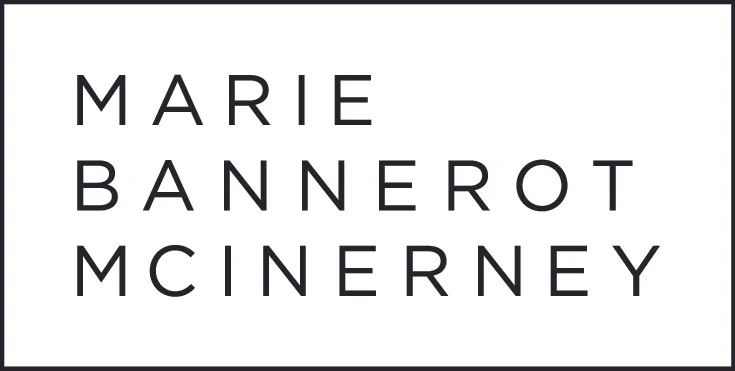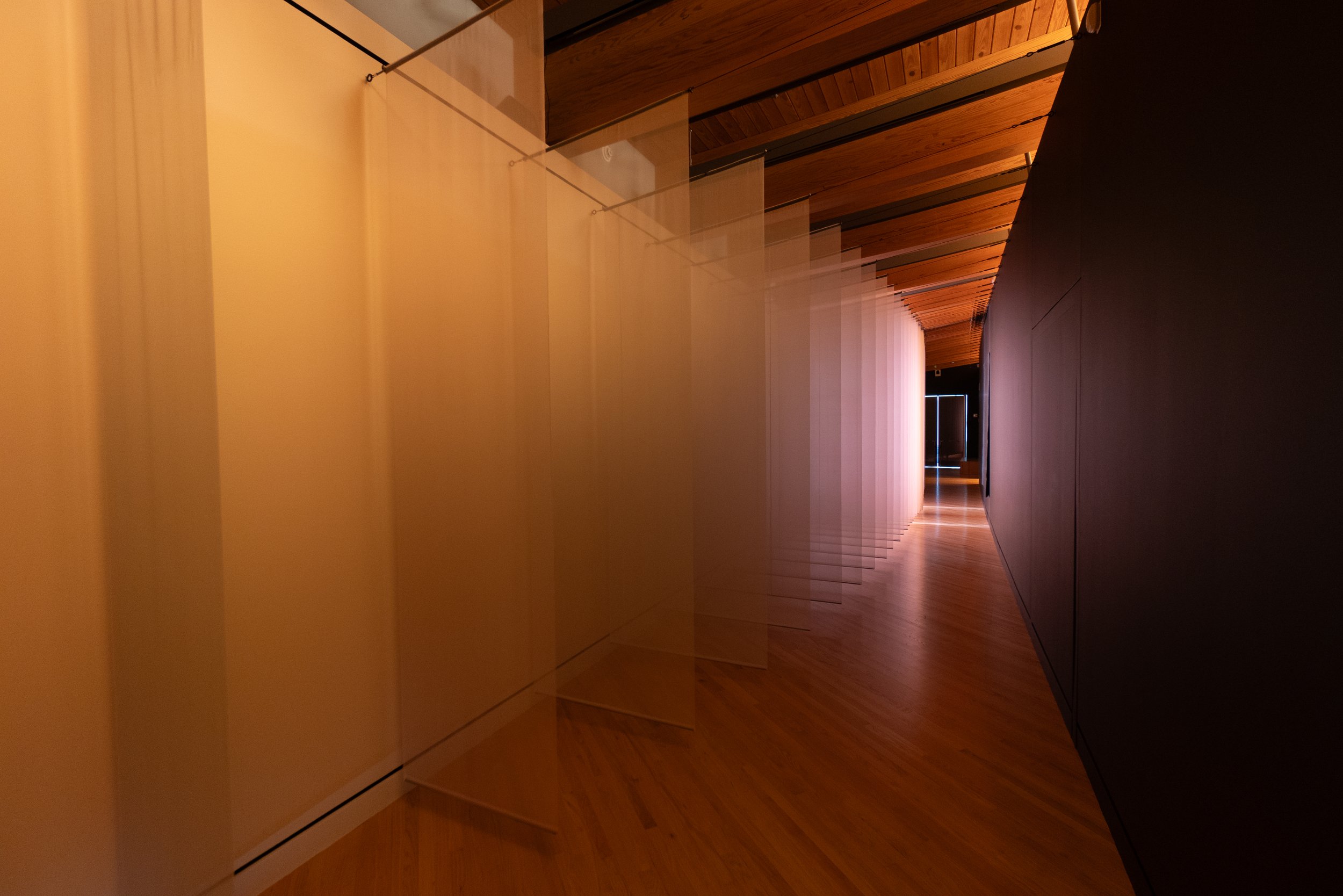
Trace Me Back
Inspired by the tragic love story of Orpheus and Eurydice, Marie Bannerot Mclnerney’s experiential installation Trace Me Back speaks to ideas of impermanence, loss, and those fleeting moments that cannot be undone. Her artistic practice mines recorded histories, ancient mythologies, and natural phenomena to meditate on the relationships between bodies and space, present and past, and perception and position.
“I create installations, objects, and drawings that consider our place within larger structures to imagine how to contend with an uncertain future,” McInerney says.
For this site-specific project curated by Alejo Benedetti, acting curator, contemporary art, and Victor Gomez, curatorial assistant, contemporary art, the artist employs various materials such as silk organza, concrete, light, and sonic elements to imaginatively transform a section of Crystal Bridges’ Contemporary Art Gallery into a space that inspires wonder, contemplative stillness, and reflection.

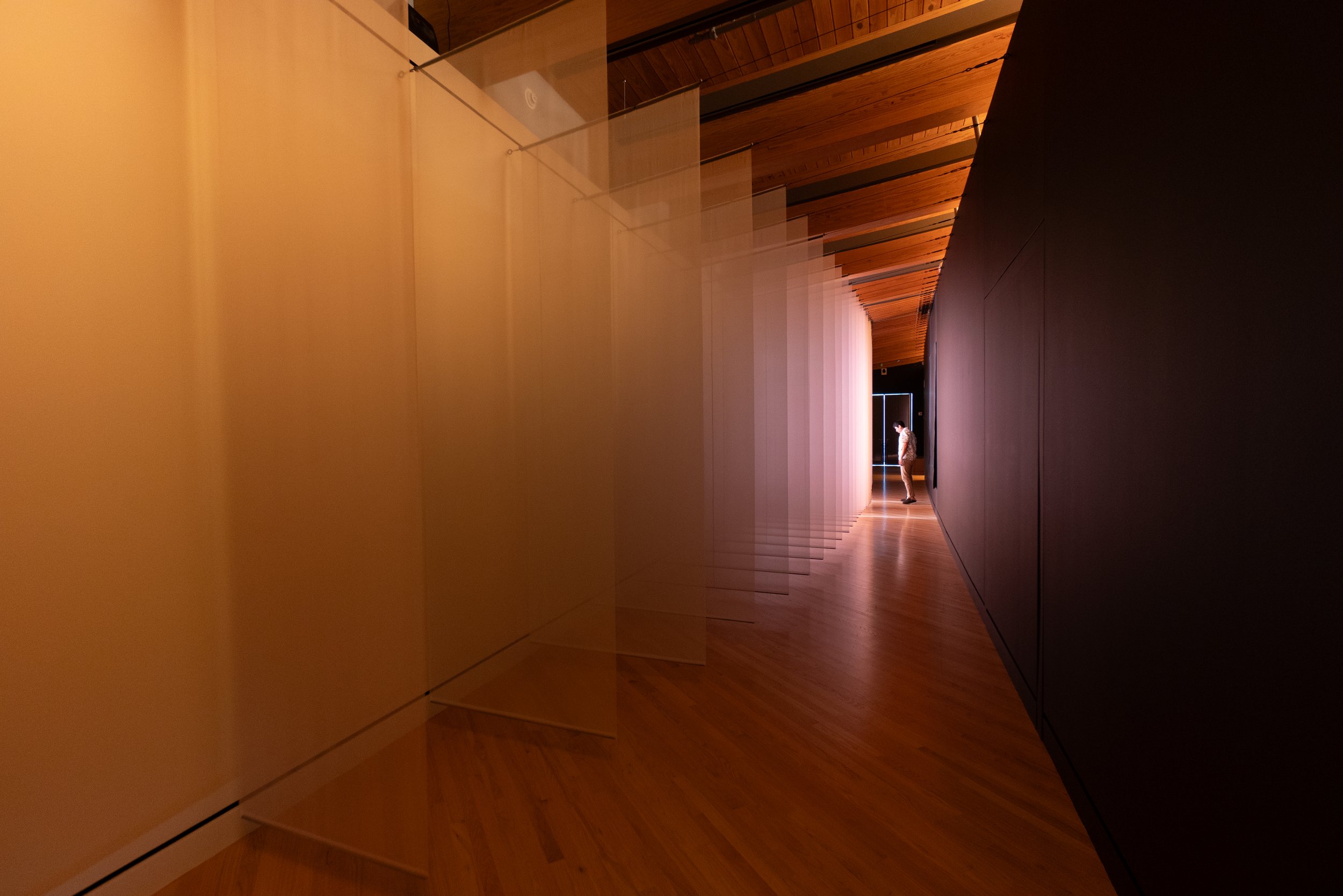

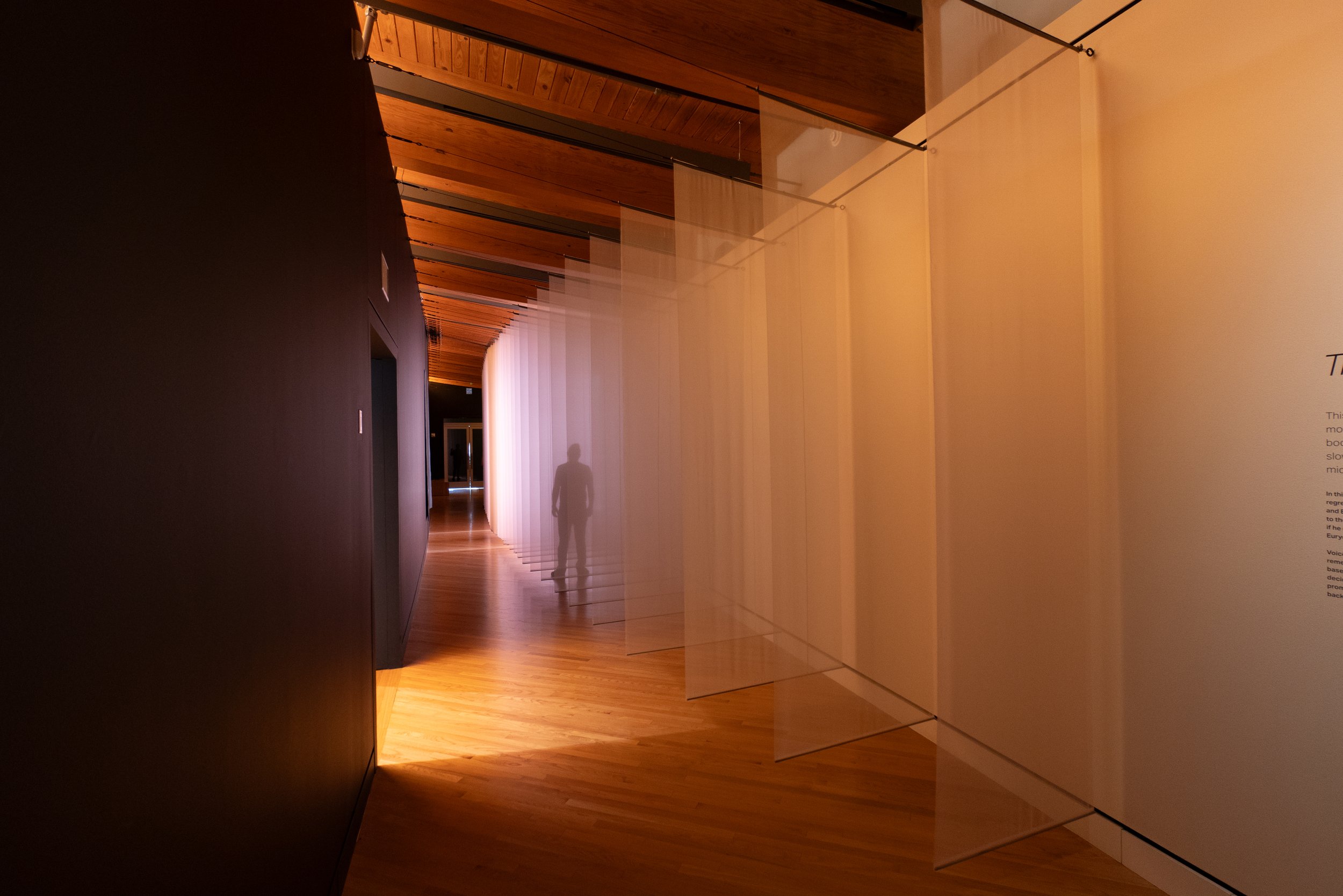
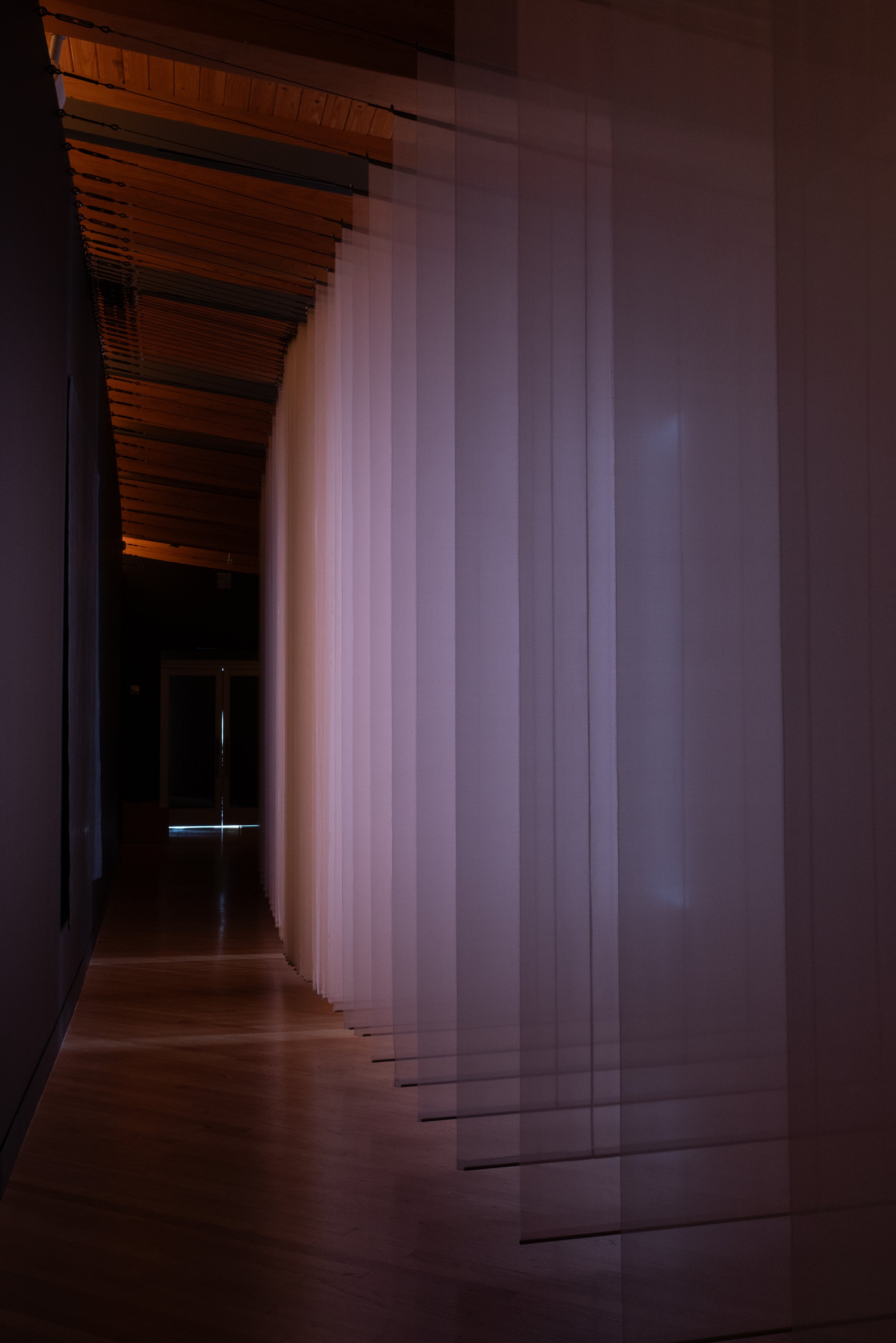
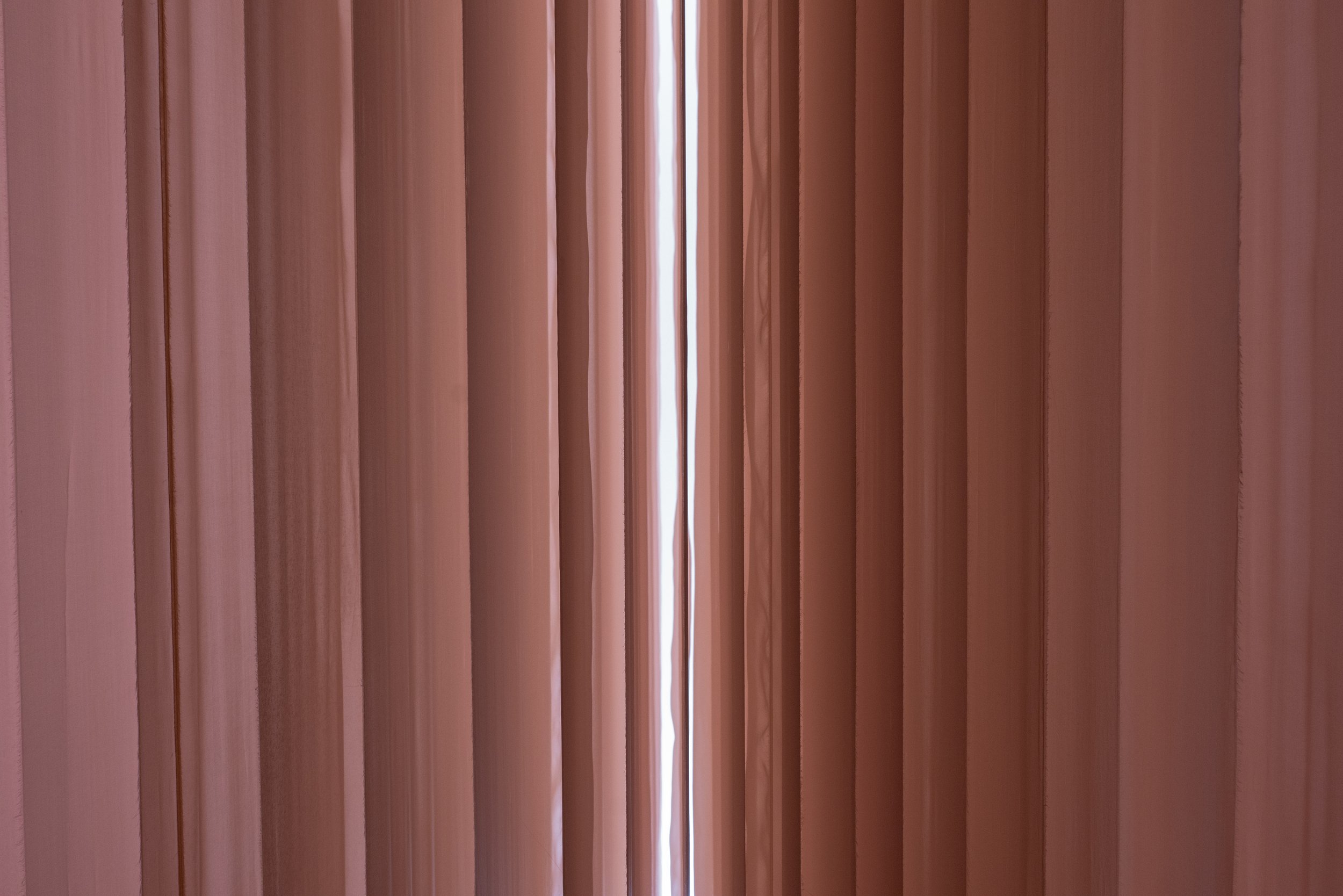
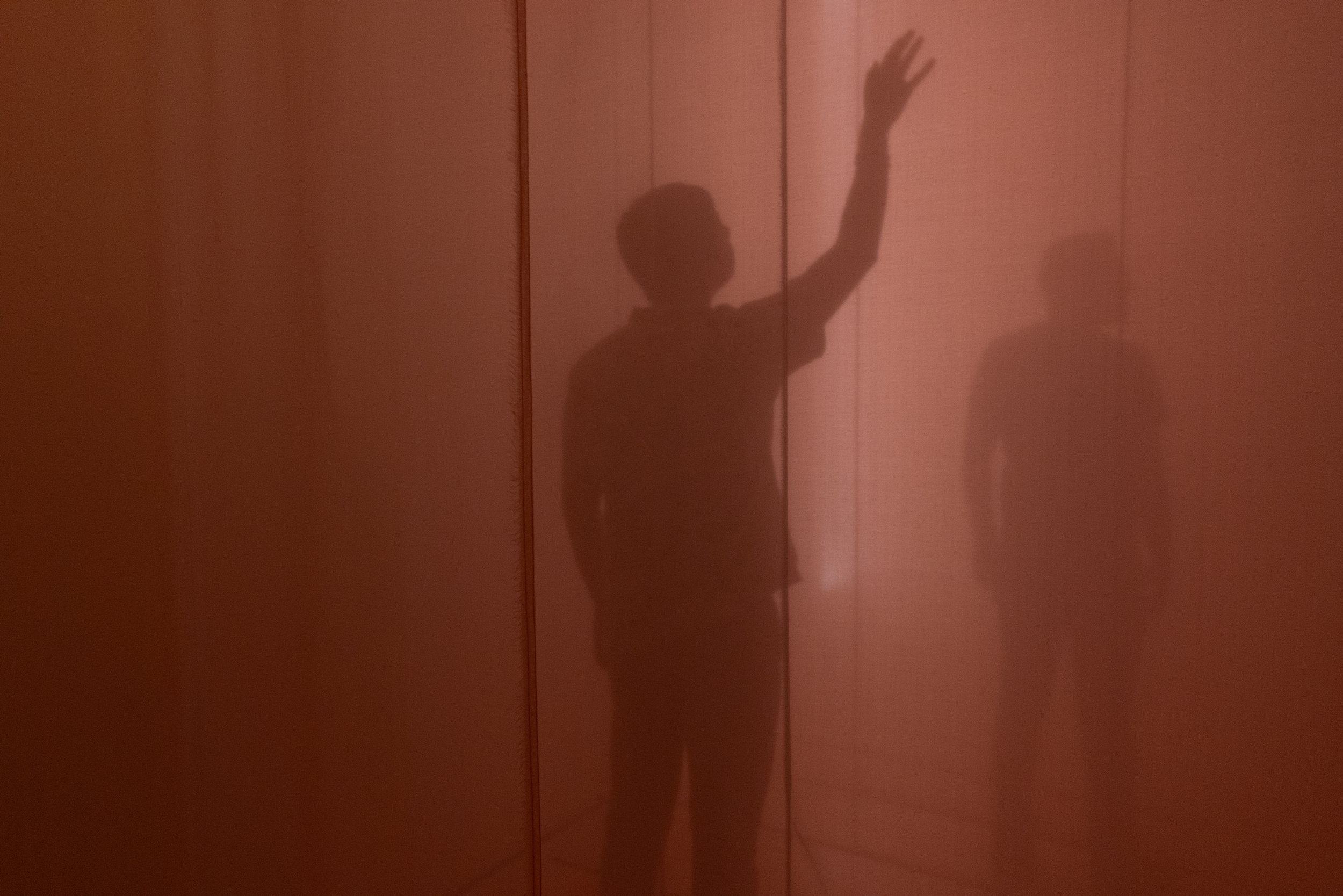
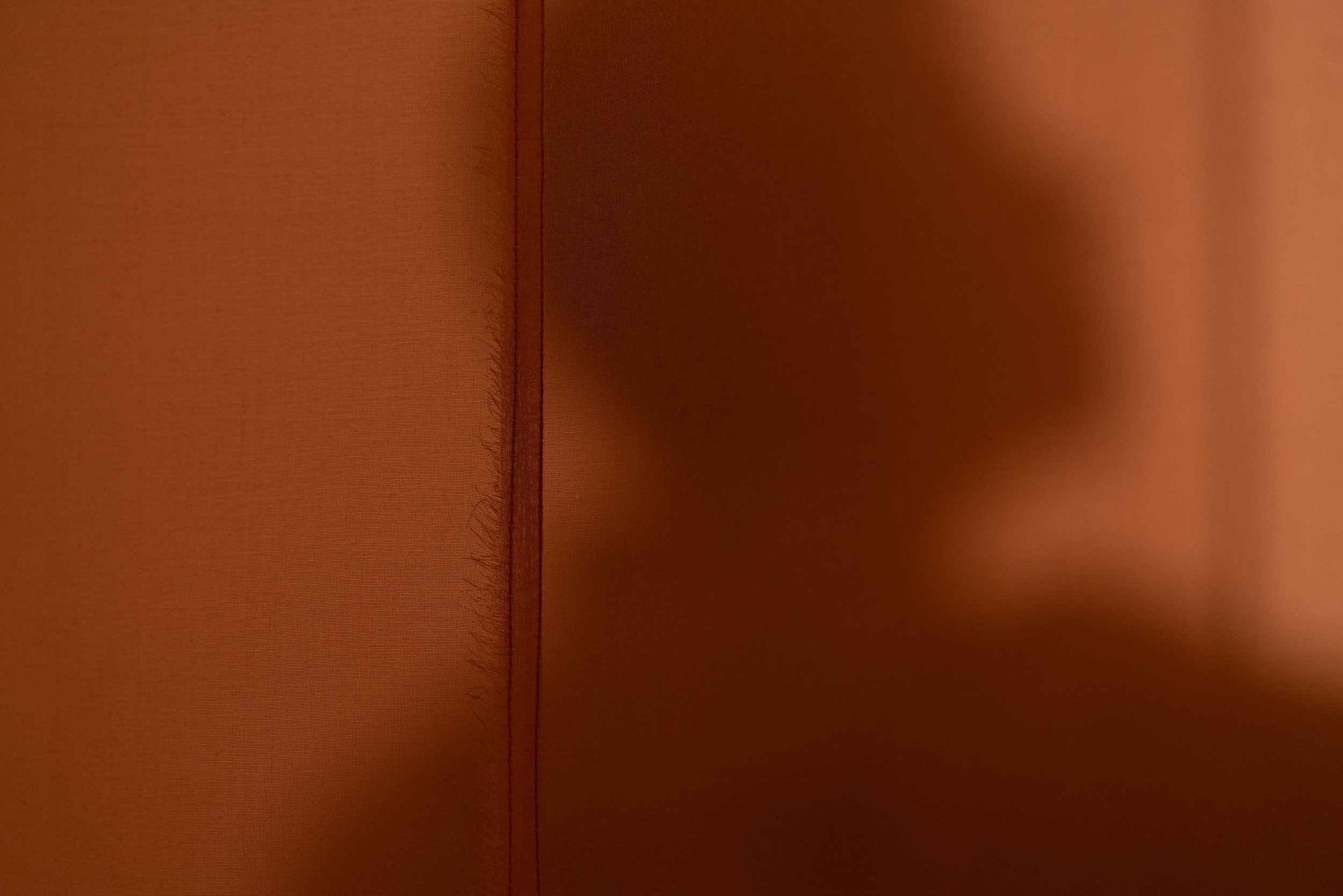
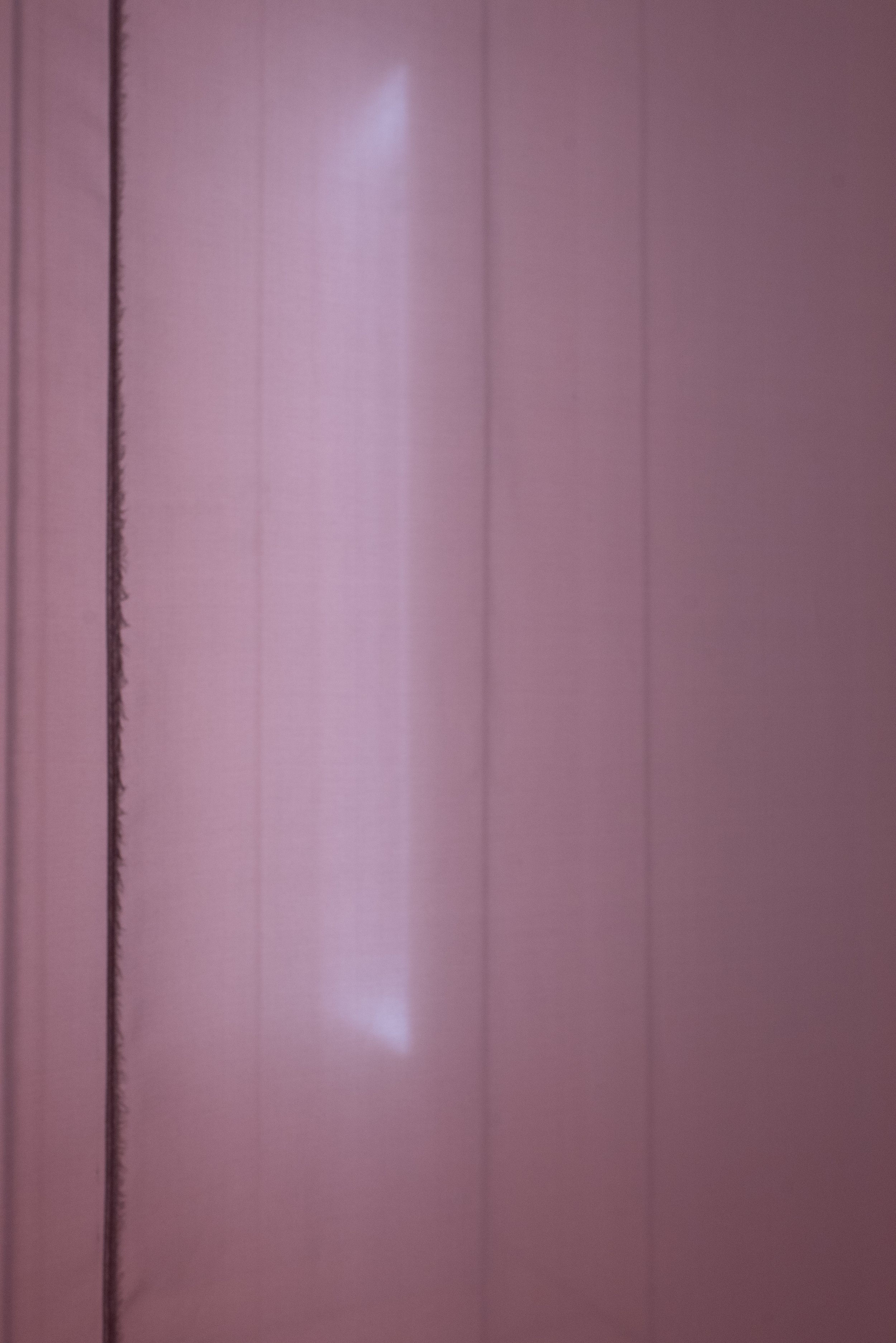
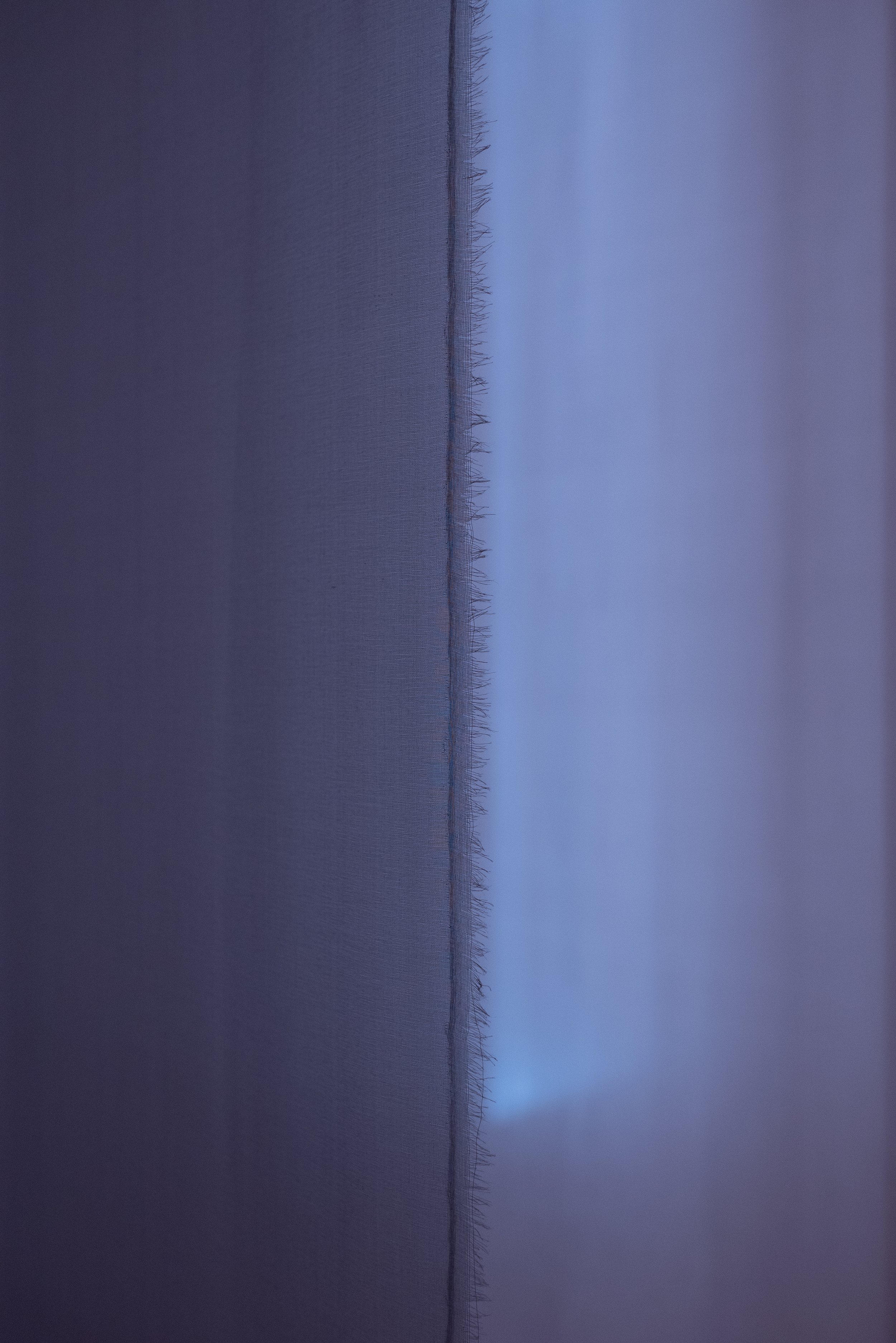
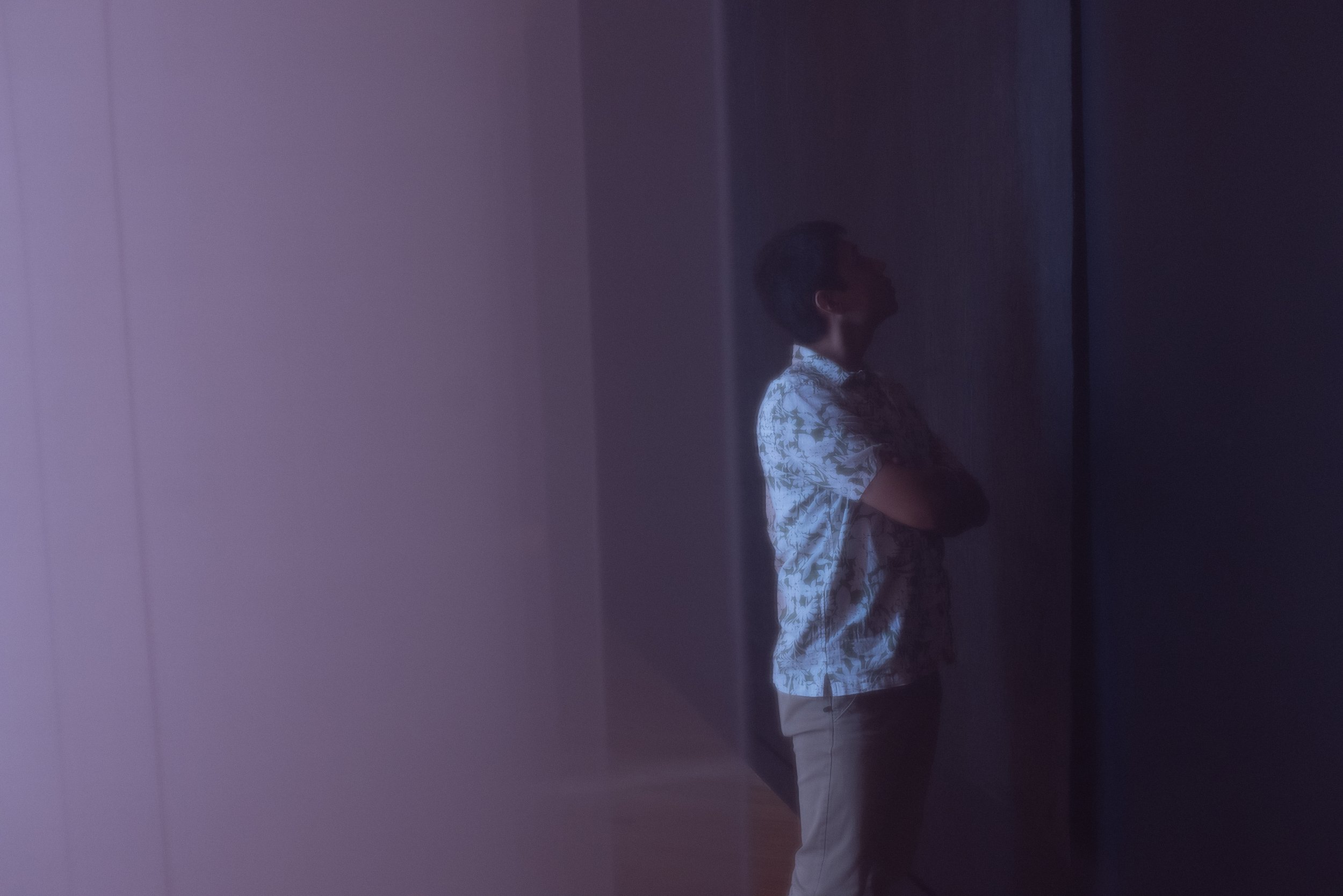
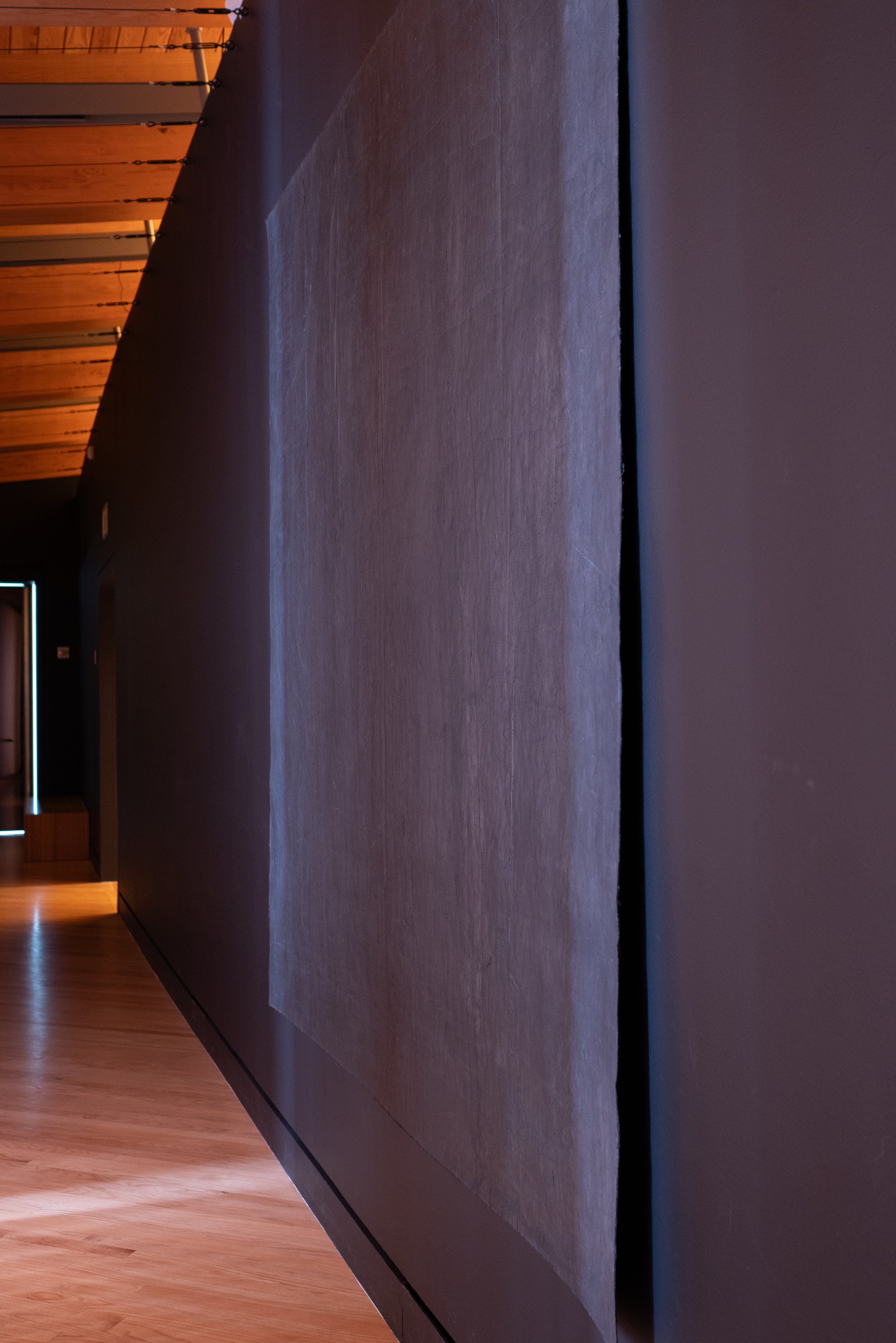
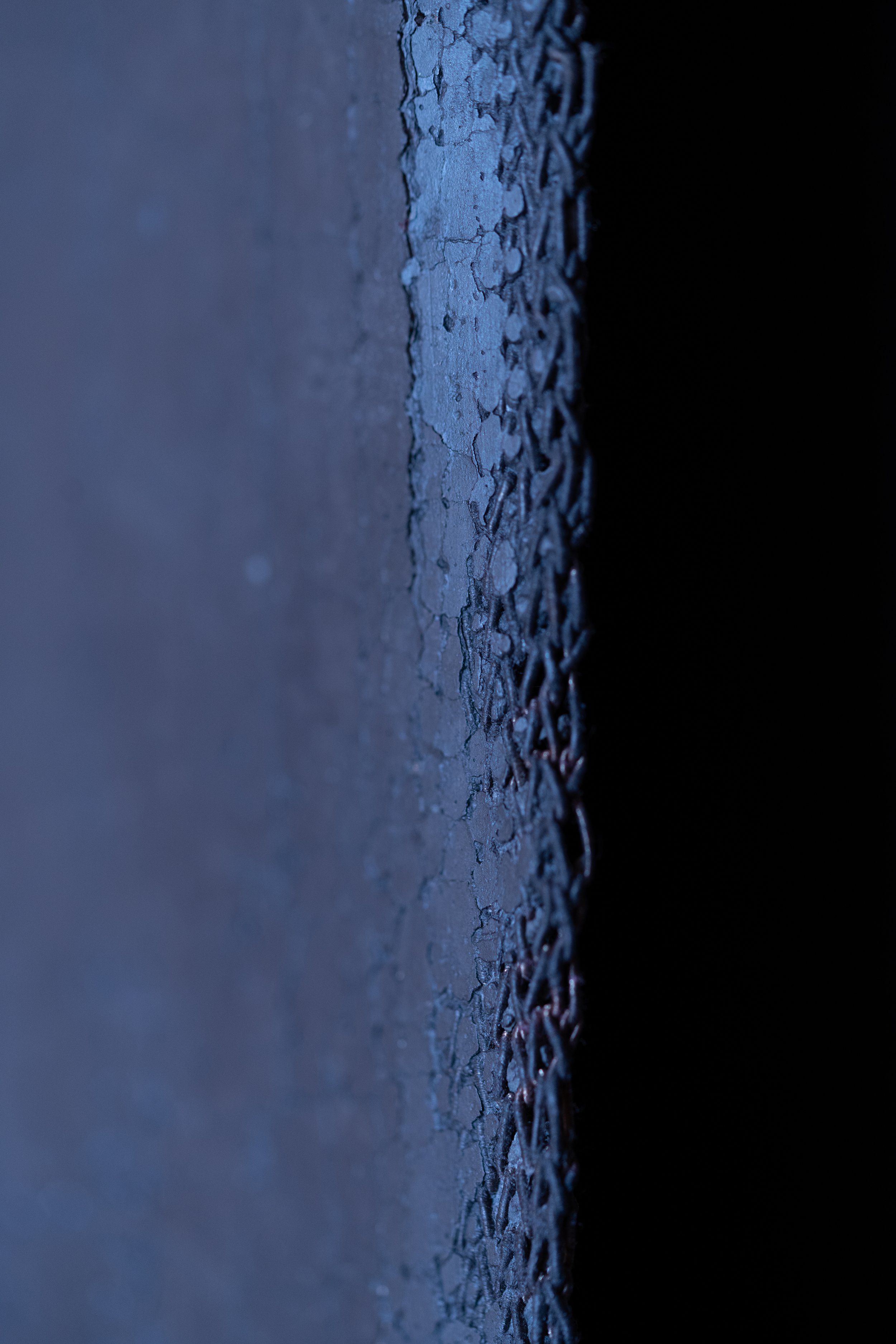
Trace Me Back
2023 | silk organza, cotton yarn, cement, graphite, dynamic LED light and sonic element 60:00:00
Exhibition Wall Text:
This is a space where you can linger. As you move between silk panels, the edges of your body blur and dissapear. Notice the diffused slowly changing illumination, creating a hazy middle ground between light and dark.
In this installation, Marie Bannerot McInerney contends with loss, regret and uncertainty. She references the Greek myth of Orpheus and Eurydice. When Eurydice dies, her husband Orpheus descends to the underworld to get her back. He can bring her home, but only if he resists looking at her. At the last second, Orpheus turns, and Eurydice is forever lost.
Voices fill the space with a collective lamentation - a song to help remember what is lost. Each note is extracted from three operas based on this myth at the precise moment when Eurydice’s fate is decided. Centering you between myth and reality, Trace Me Back prompts self-reflection. What are the moments we cannot take back? How do they echo into our futures?
Marie Bannerot McInerney: Trace Me Back
Alejo Benedetti, Acting Curator, Contemporary Art | Crystal Bridges Museum of American Art
In a dimly lit corridor, 67 silk panels hang in a convex arc between two contrasting walls: one black and one white. On one side, a large, concrete-coated textile hangs in the middle of the dark wall. Across from it, obscured in part by fabric, is an equally scaled square of light. A chorus of voices draws guests in and pulls them around the curve of fabric. The effect is alluring and a little mysterious.
Marie Bannerot McInerney often uses her work to question our place within the unknown. Like others before her, she uses myth to contend with life’s biggest questions. In Trace Me Back, McInerney confronts the unknowable by creating moments of respite that blend the tangible and mystical, guided by the threads of a single story. She references the tale of Orpheus and Eurydice, an ancient Greek myth that explores love and loss. Following the marriage of the musician Orpheus to the nymph Eurydice, a viper bite tragically kills the newlywed bride. Devastated by the loss of his wife, Orpheus journeys to the land of the dead to retrieve her.
Moved by the beauty and anguish of Orpheus’ songs, the rulers of the underworld, Hades and Persephone, offer him the chance to take Eurydice back. He can bring her home, but only if he resists looking back at her as they leave. Thrilled by his luck, Orpheus leads Eurydice to the exit. But as she is about to cross the threshold, he looks back, damning her to spend eternity below. The myth is a cautionary tale about actions that cannot be undone, underscoring how fleeting moments decide our present and echo into our future.
Fittingly, time is a major element in Trace Me Back. The space is 80 feet long, and the arc of fabric lures guests to travel all the way through the gallery to peek around the curve. The sound component builds over an hour, a chord formed out of the notes sung at the exact moment Orpheus looks back at Eurydice in three operas based on the myth. One voice becomes two, two becomes three, growing in number until there is a swell of young and old voices in a beautiful—if slightly haunting—chorus. The song then returns to a single voice, starting the cycle over. The sound component synchs with the wall-bound light. This light gradually changes hue from a gentle, cool white of first light to a sweltering warm hue at the apex of the chorus before returning to the quiet, cool white again. Ironically, these elements highlight the ceaseless march of time, yet also create the perfect place to pause.
This push and pull of contradictions extend to the artist’s materials. On one side, there is a knit textile covered in dark concrete McInerney layered onto its surface, while on the other, a simple square of light. They represent extremes: weightless and heavy, presence and absence, light and dark. But if these two wall-bound components are at different ends of the spectrum, the space between them becomes neutral ground. Yards of silk organza hang perpendicular to the walls. Faintly dyed in a range of colors, the panels closest to the center appear the most colorful as the light spreads across them. As the arc of fabric stretches towards either end of the space, they appear increasingly more muted. The breathable fabric exists both as a physical, touchable barrier and a sieve for air to move through. The silk reflects and redistributes the light even as it dampens its brightness. A guest can look back through the panels and see ghostly blurs of people on the other side of the room—present but obscured by material.
This middle space invites the viewer to gaze through, step between, and gently brush their hand against the fabric panels. This invitation to touch is a rarity in an art museum. Here, McInerney enters the guest’s space and extends the engagement from something seen from afar to something felt. She invites the guests to truly understand the work as present and real.
But reality makes for crummy myths. Our greatest epics and beloved parables exist in an exaggerated version of the real. Helios never pulled the sun across the sky, but that explanation satisfied legions of ancient Greeks. A tortoise never faced off against a hare, but their race teaches children the value of slow and steady consistency. The biggest issues that face us: who we are, how we live life well, or how we understand concepts too big for us—these are assuaged by simple stories that offer an explanation and therefore some comfort.
McInerney’s use of myth stems from this search for answers. Her own concerns about the impending climate crisis sit nestled at the core of this work. But that starting point is more of a placeholder for any outsized issues that loom over society. Today the most impending threats to life as we know it feel like colossally scaled problems that grew out of poor decisions. We are all Orpheus living witness to the moments we can’t take back—even as we continue to move forward.
However, in the space of the gallery, McInerney offers a moment of respite. The walls become a blank canvas for guests to project the vast, abstract concepts that plague them onto a simple arrangement of materials. Trace Me Back does not endeavor to resolve problems. Instead, when someone stands between light and dark—past and future—there is a momentary pause, a new distance from the issue, and an opportunity to find comfort even amidst the unknown.
Documentation: Tom McFetridge
Marie Bannerot McInerney: Rastrearme
Alejo Benedetti, Conservador interino, Arte contemporáneo
En un pasillo iluminado sutilmente, 67 paneles de seda cuelgan en un arco convexo entre dos paredes contrastantes: una negra y otra blanca. A un lado, un gran textil recubierto de concreto cuelga en medio de la pared oscura. Enfrente, oculto en parte por la tela, hay un cuadro de luz a la misma escala. Un coro de voces atrae a los visitantes y los conduce hacia la curva de la tela, el efecto es seductor y un poco misterioso.
Marie Bannerot McInerney a menudo utiliza su obra para cuestionar nuestro lugar en lo desconocido. Al igual que otros antes que ella, utiliza el mito para enfrentarse a los grandes interrogantes de la vida. En Rastrearme, afronta lo desconocido creando momentos de descanso que mezclan lo tangible y lo místico, guiada por los detalles de una sola historia. Hace referencia a la historia de Orfeo y Eurídice, un antiguo mito griego que explora el amor y la pérdida. Tras el matrimonio del músico Orfeo con la ninfa Eurídice, una mordedura de serpiente trágicamente mata a la recién casada. Desolado por la pérdida de su esposa, Orfeo viaja al país de los muertos para recuperarla.
Conmovidos por la belleza y el dolor de las canciones de Orfeo, los soberanos del inframundo, Hades y Perséfone, le ofrecen la oportunidad de recuperar a Eurídice: podrá llevársela a casa, pero sólo si se resiste a mirarla mientras se marchan. Emocionado por su suerte, Orfeo conduce a Eurídice hacia la salida, pero cuando están a punto de cruzar el umbral, Orfeo mira hacia atrás y la condena a quedarse ahí por la eternidad. El mito es un relato con moraleja sobre las acciones que no se pueden deshacer, que resalta cómo los momentos fugaces deciden nuestro presente y repercuten en nuestro futuro.
Como corresponde, el tiempo es un elemento fundamental en Rastrearme. El espacio mide más de 20 metros de largo y el arco de tela invita a los visitantes a recorrer toda la galería para asomarse al otro lado de la curva. El componente sonoro se desarrolla durante una hora, un acorde formado por las notas cantadas en el momento exacto en que Orfeo mira a Eurídice en tres óperas basadas en el mito. Una voz se convierte en dos, dos se convierten en tres, creciendo en número hasta que hay un oleaje de voces recientes y pasadas en un coro hermoso, aunque ligeramente inquietante. Luego, la canción vuelve a una sola voz y el ciclo vuelve a comenzar. Este componente se sincroniza con la luz de la pared, la cual cambia gradualmente de tono, pasando de un blanco suave y frío de la primera luz a un tono cálido e intenso en el ápice del coro, antes de volver de nuevo al blanco suave y frío. Irónicamente, estos elementos ponen de relieve la incansable marcha del tiempo, pero también crean el lugar perfecto para hacer una pausa.
Este estira y afloja de contradicciones se extiende hasta los materiales de la artista. Por un lado, tenemos una tela tejida cubierta de concreto oscuro que McInerney colocó en capas, mientras que por el otro, un simple cuadro de luz. Estos, representan los extremos: lo liviano y lo pesado, la presencia y la ausencia, la luz y la oscuridad; pero si estos dos componentes de la pared están en extremos diferentes del espectro, el espacio entre ellos se convierte en terreno neutral. Varios metros de organza de seda cuelgan perpendiculares a las paredes, ligeramente teñidos en una variedad de colores, los paneles más cercanos al centro parecen los más coloridos cuando la luz se propaga a través de ellos. A medida que el arco de tela se extiende hacia los extremos del espacio, los paneles parecen cada vez más tenues. La tela transpirable es a la vez una barrera física que se puede tocar y un cedazo por el que pasa el aire. La seda refleja y redistribuye la luz al tiempo que atenúa su brillo, un visitante puede mirar hacia atrás a través de los paneles y ver siluetas borrosas de personas al otro lado de la sala, presentes pero ocultas por el material.
Este espacio intermedio invita al espectador a mirar a través de él, a caminar entre los paneles de tela y rozarlos suavemente con la mano. Esta invitación a tocar es una peculiaridad en un museo de arte. Aquí, McInerney entra en el espacio del visitante y amplía la interacción de algo que se ve desde lejos a algo que se siente; invita a los visitantes a entender la obra como algo presente y real.
Pero la realidad da lugar a mitos poco convincentes. Nuestras mayores epopeyas y parábolas más queridas existen en una versión exagerada de lo real. Helios nunca arrastró el sol por el cielo, pero esa explicación satisfizo a legiones de antiguos griegos. Una tortuga nunca compitió contra una liebre, pero su carrera le demuestra a los niños el valor de la constancia lenta y sostenible. Los grandes problemas a los que nos enfrentamos: quiénes somos, cómo vivir bien la vida o cómo entender conceptos demasiado grandes para nosotros, se suavizan con historias sencillas que ofrecen una explicación y, por lo tanto, cierto consuelo.
McInerney recurre al mito en su búsqueda de respuestas. Su preocupación por la inminente crisis climática es el núcleo de esta obra, pero ese punto de partida es más bien un espaciador para cualquier problema de gran envergadura que surja en la sociedad. Hoy en día, las amenazas más latentes a la vida tal y como la conocemos, parecen problemas a escala colosal surgidos de malas decisiones. Todos somos Orfeo, testigos de momentos irreversibles, aunque sigamos avanzando.
Sin embargo, en este espacio de la galería, McInerney ofrece un momento de descanso. Las paredes se convierten en un lienzo en blanco para que los visitantes proyecten, sobre una sencilla disposición de materiales, los grandes conceptos abstractos que les afligen. Rastrearme no pretende resolver problemas; en lugar de ello, cuando alguien se sitúa entre la luz y la oscuridad (pasado y futuro), se produce una pausa momentánea, una nueva distancia respecto al problema y una oportunidad de encontrar consuelo incluso en medio de lo desconocido.
Documentación: Tom McFetridge
Special thanks to Producer and Sonic Collaborator Bill Reiter.
